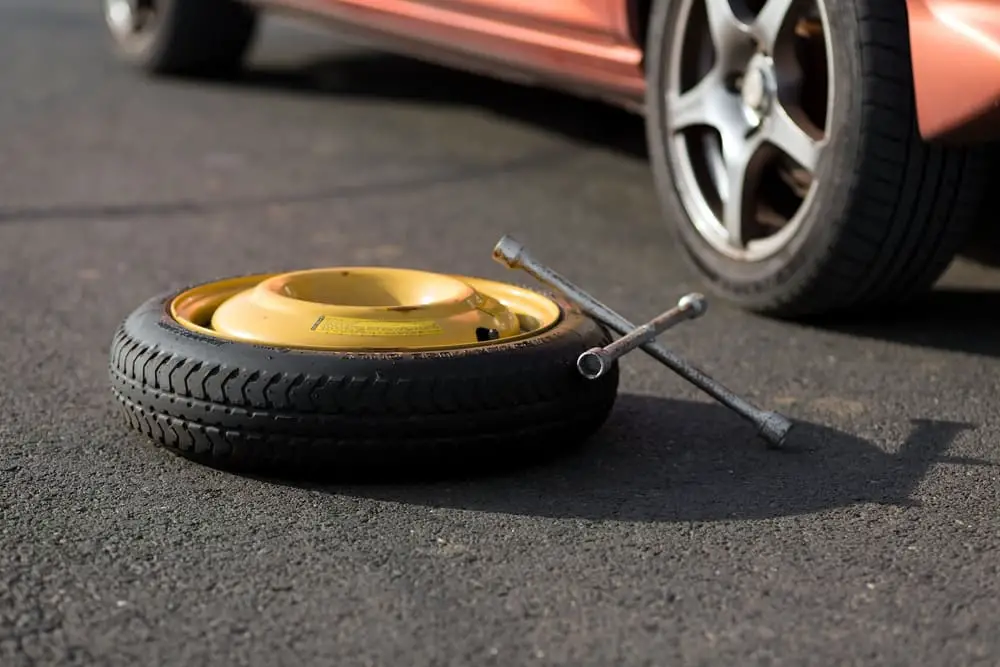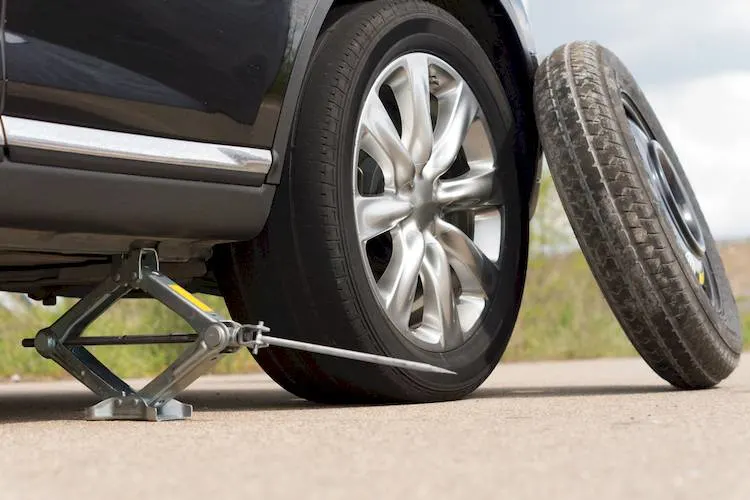Imagine driving through the highway and finding out that the spare tire is also flat. It can be frustrating, isn’t it? But fear not, for in this article, we’re here to unravel the mystery of the flat-looking spare tire and put your worries to rest.
So why does the spare tire look flat?
A spare tire looks flat due to problems in its pressure, age, and storage conditions. If the tire remains neglected for a long time then it loses its pressure and gets flat. If you find yourself in a problem like this, then just check the pressure of the tire, get it properly inflated, and then inspect it.
There’s more information on this down below. So, without any further ado let’s jump in!
Why Does a Spare Tire Looks Flat?
The main reason a spare tire may look flat is due to a combination of factors such as tire pressure, age, and storage conditions. When a spare tire is not in use, it can gradually lose air pressure over time.
Natural Permeation:
Tires may look flat mainly due to natural permeation. This is when air molecules slowly escape through the rubber material of the tire.
Additionally, temperature changes can also affect tire pressure, causing it to decrease. Especially during winter, tire pressure can decrease and you will get a warning such as 80 PSI Cold. As a result, the spare tire may appear flat or underinflated.
Natural Degradation:

Regarding the lifespan of spare tires, it generally ranges from 6 to 10 years, but this can vary depending on the type of spare tire. Full-size spares, which are similar to regular tires, have a longer lifespan and can last as long as the tires on your car.
On the other hand, compact spares, commonly known as “donut” spares, are smaller and less durable, so their lifespan may be shorter.
Various factors can influence the longevity of a spare tire, including storage conditions and exposure to temperature extremes. Ideally, spare tires should be stored in cool, dry places away from direct sunlight to minimize degradation.
What to Do If a Spare Tire is Flat?
If you find out that the spare tire is flat then do the following:
- Check the air pressure of the tire
- Inflate the tire properly
- Inspect the tire
It’s that simple. To inflate the tires properly, grab the tire gauge and press it firmly against the valve. Then start the airflow. Keep an eye out on the gauge and check when it reaches the recommended pressure level. Make sure not to overfill the tire.
Normally, a decline in pressure is the main reason why a tire looks flat. Check the appropriate tire pressure in the owner’s manual and based on that inflate the tire accordingly.
Is It Normal for a Spare Tire to Look Flat?
Yes, it is normal for a spare tire to look flat if no proper tires are steps taken to maintain the pressure in the tire. In most cases, the tires are not maintained that’s why spare tires are more prone to look flat.
You should keep track of your spare tire’s physical condition. Check the pressure and the external condition of the tire regularly.
This is a good source to help you check the tire pressure:
Can I Drive With a Flat Spare Tire?

No, you can not drive with a flat spare tire. An inflated tire means that it will not have the proper grip on the road and the risk of blowout is even higher. In comparison to deflated tires, this is more dangerous.
If it is a donut spare tire, chances are you will drive only 02 miles and the tire will be destroyed.
So, if you find that the spare tire is flat then grab the air compressor to put more air in it and get it properly inflated. This way you will have a safer driving experience.
How to Avoid a Spare Tire to Go Flat?
Caring for your spare tire is essential to ensure it is in optimal condition when an emergency arises. By following these guidelines, you can keep your spare tire ready for use:
- Store your spare tire in a cool, dry location away from extreme temperatures and direct sunlight.
- Periodically inspect your spare tire for any signs of damage, such as cracks or bulges.
- Check the air pressure of your spare tire regularly using a tire pressure gauge.
- If your spare tire is over 6 to 10 years old or shows signs of damage or worn-out tread, it’s advisable to replace it.
Remember, a spare tire should only be used temporarily. It is crucial to replace it with a long-term solution, such as a regular tire, as soon as possible. But it is important to remember the tire conversion method of 950-165 while you change it.
But regularly inspecting and maintaining your spare tire will help guarantee its effectiveness and readiness in emergency situations.
By taking these precautions, you can have peace of mind knowing that your spare tire is in good condition and ready to assist you whenever needed.
Frequently Asked Questions (FAQs):
Can I Repair a Flat Spare Tire with a DIY Kit?
Yes, you can repair a flat spare tire with a DIY kit. For a car with full-size spare tires, you can get a repair kit and use the equipment in it to repair it. But for cases like repairing sidewall damage or large punctures, we do not suggest using a DIY kit.
Can I Use an Aerosol Tire Repair Kit instead of Spare Tire?
Yes, you can use an aerosol tire repair kit instead of the spare tire. If you find your tires running flat then you can just grab the repair kit and use the tire inflation and sealant kit to fix any issue. Keep the tire properly inflated or patch up any puncture hole in the tire. The best part is that the weight and space saved by these kit help to use this kit instead of the spare tire.
Is It Necessary to Replace All the Tires if the Spare Tire Goes Flat?
No, it is not necessary to replace all the tires if the spare tire goes flat in a car with a full-size spare tire. However, for normal replacement procedures, you can replace all four tires at the same time. In the case of front-wheel drive, it is just enough to replace two tires at a single time.
Conclusion
In conclusion, it is crucial to regularly inspect your vehicle’s tires, including the spare. Neglecting tire maintenance can lead to unexpected issues on the road.
If your spare tire looks flat, take immediate action to address the problem and ensure your safety. Remember, a well-maintained spare tire can be a lifesaver during unexpected situations.
Stay vigilant and prioritize tire care for a smooth and worry-free driving experience.
